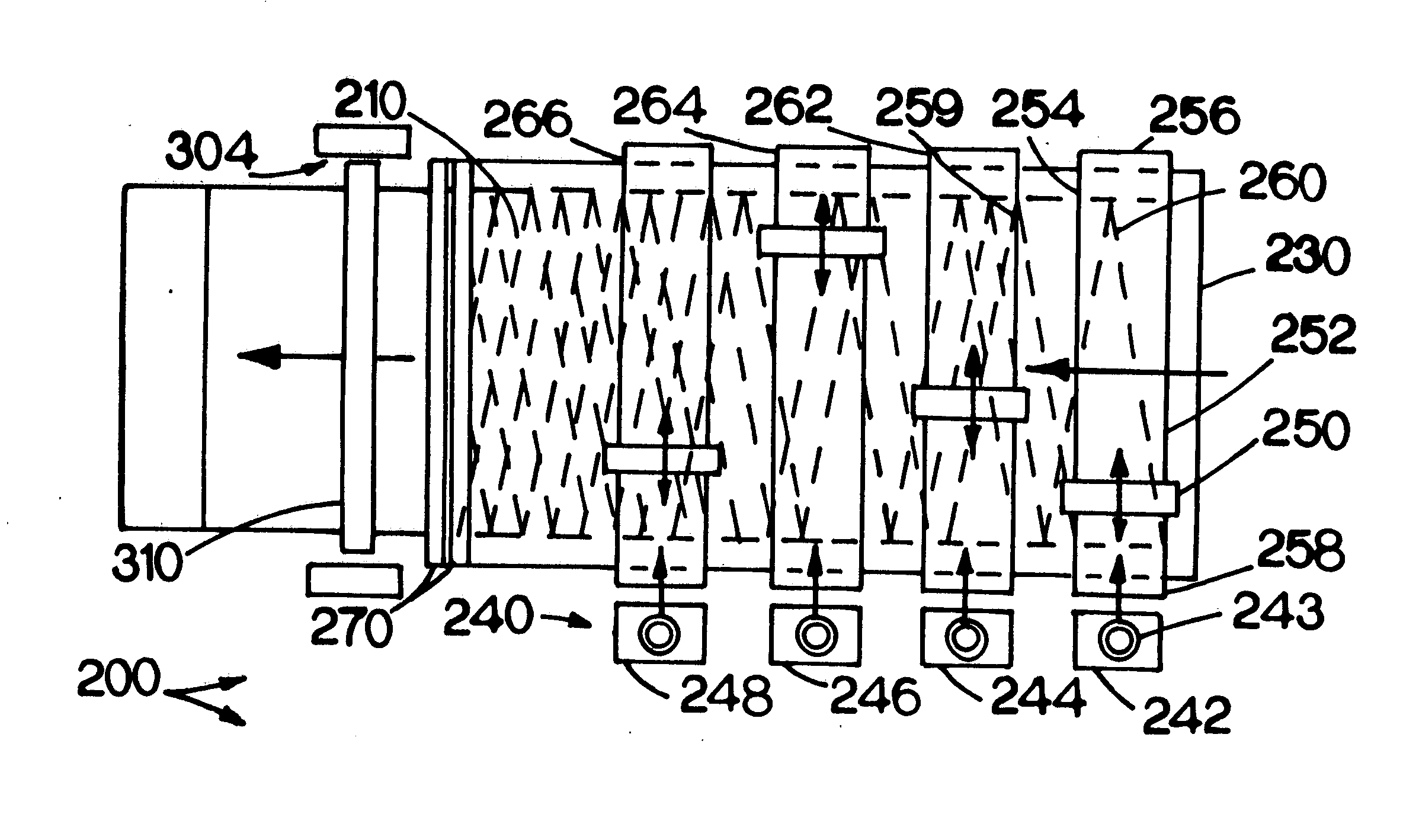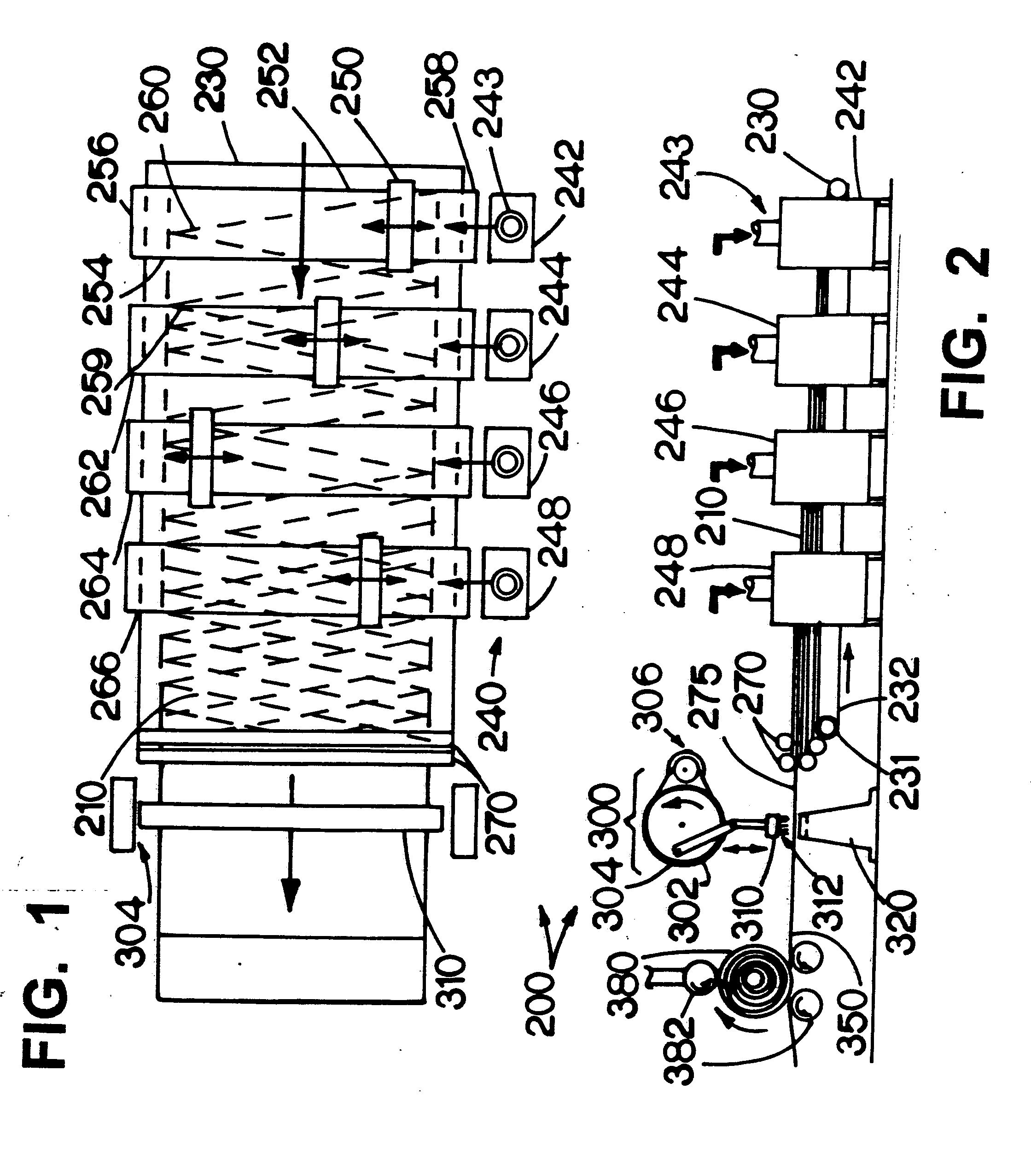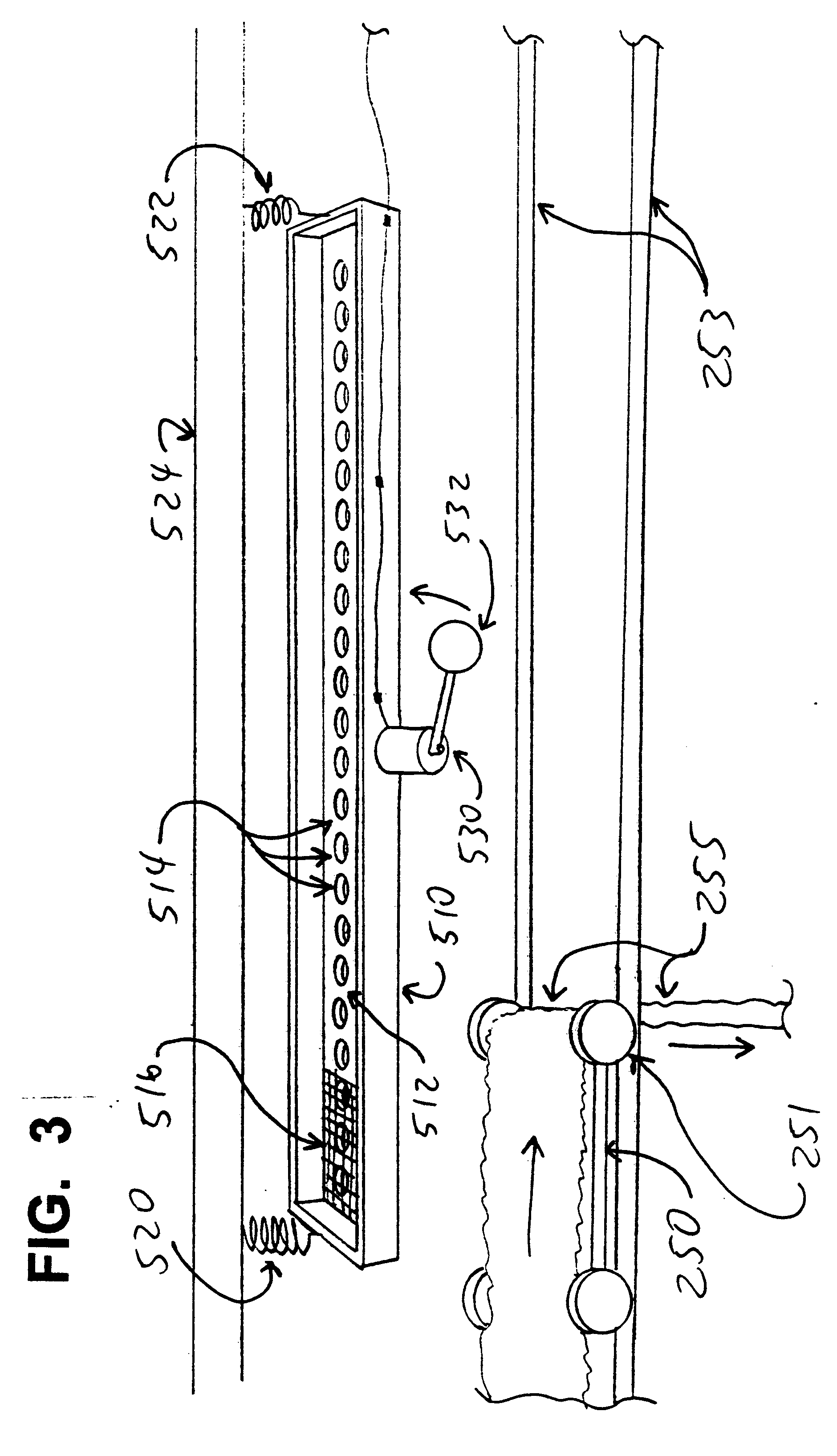Building materials from needle-punched fiber mats with granular heat-activated adhesives
- Summary
- Abstract
- Description
- Claims
- Application Information
AI Technical Summary
Benefits of technology
Problems solved by technology
Method used
Image
Examples
Embodiment Construction
[0034] As summarized above, this invention discloses methods and devices for embedding and distributing particulate adhesives within needle-punched fiber mats. This can allow the use of relatively inexpensive adhesives in the manufacture of various types of building materials (including sheets of wood-like material, comparable to plywood, as disclosed in published PCT application WO 01 / 76869, as well as various other types of building material (such as roofing shingles, embossed layers, laminated beams, etc.) that can be made from recycled carpets or other synthetic fibers.
[0035] This manufacturing process uses the same types of cross-lapping and conveyor machines that are used to manufacture conventional needle-punched fiber mats, of the type that are widely used as carpet underlayers in commercial sites such as stores and restaurants. A conventional system of this type, which is prior art, is shown as system 200 in FIG. 1 (a top or plan view) and FIG. 2 (a side or elevation view)...
PUM
| Property | Measurement | Unit |
|---|---|---|
| Flexibility | aaaaa | aaaaa |
Abstract
Description
Claims
Application Information
 Login to View More
Login to View More - R&D
- Intellectual Property
- Life Sciences
- Materials
- Tech Scout
- Unparalleled Data Quality
- Higher Quality Content
- 60% Fewer Hallucinations
Browse by: Latest US Patents, China's latest patents, Technical Efficacy Thesaurus, Application Domain, Technology Topic, Popular Technical Reports.
© 2025 PatSnap. All rights reserved.Legal|Privacy policy|Modern Slavery Act Transparency Statement|Sitemap|About US| Contact US: help@patsnap.com



